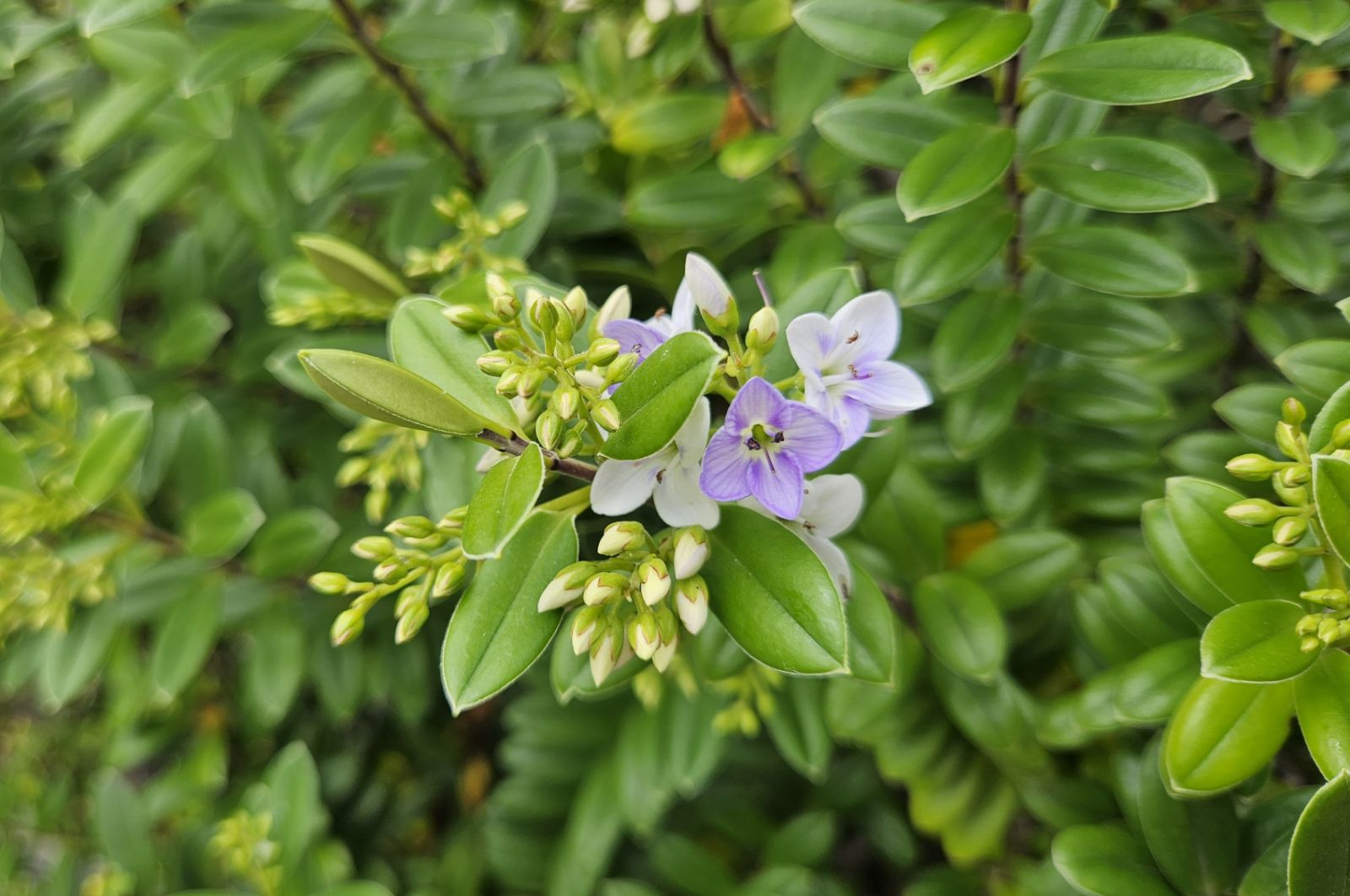Hebe elliptica
Credits
Article from Bean's Trees and Shrubs Hardy in the British Isles
Recommended citation
'Hebe elliptica' from the website Trees and Shrubs Online (treesandshrubsonline.
Genus
Synonyms
- Veronica elliptica Forst. f.
- Hebe magellanica Gmel.
- Veronica decussata Ait.
Other taxa in genus
- Hebe amplexicaulis
- Hebe anomala
- Hebe armstrongii
- Hebe brachysiphon
- Hebe buchananii
- Hebe buxifolia
- Hebe canterburiensis
- Hebe carnosula
- Hebe chathamica
- Hebe colensoi
- Hebe cupressoides
- Hebe decumbens
- Hebe dieffenbachii
- Hebe diosmifolia
- Hebe epacridea
- Hebe × franciscana
- Hebe gibbsii
- Hebe gigantea
- Hebe glaucophylla
- Hebe gracillima
- Hebe hectoris
- Hebe hulkeana
- Hebe leiophylla
- Hebe ligustrifolia
- Hebe loganioides
- Hebe lycopodioides
- Hebe macrantha
- Hebe macrocarpa
- Hebe matthewsii
- Hebe ochracea
- Hebe parviflora
- Hebe pimeleoides
- Hebe pinguifolia
- Hebe propinqua
- Hebe rakaiensis
- Hebe recurva
- Hebe rigidula
- Hebe salicifolia
- Hebe speciosa
- Hebe stricta
- Hebe tetrasticha
A tree up to 20 ft high, or a shrub a few feet high, in the wild; branches round, with a downy strip above each leaf-axil, or wholly downy. Leaves oval or obovate, narrowed abruptly at the apex to a short point; 1⁄2 to 11⁄4 in. long, 1⁄4 to 1⁄2 in. wide, standing out at right angles from the stem, the base rounded and distinctly but shortly stalked, the stalk flattened to the stem; pale green and glabrous except that the margin is downy. Racemes crowded near the ends of the branches, 1 to 11⁄2 in. long, erect, not or slightly downy. Flowers almost the largest in the genus, being sometimes 2⁄3 in. diameter, white or bluish, fragrant, four to twelve of them appearing on a raceme. Seed-vessel twice the length of the sepals.
Native of New Zealand, Chile, Tierra del Fuego, and the Falkland Islands, whence it was, according to Aiton, introduced by Dr Fothergill in 1776. It is one of numerous instances showing the close affinity of the flora of New Zealand with that of southern S. America. Reintroduced from the Falkland Islands by the late Clarence Elliott.
The true species is rare in gardens, most of the plants grown under its name being forms of H. × franciscana, its hybrid with H. speciosa.

